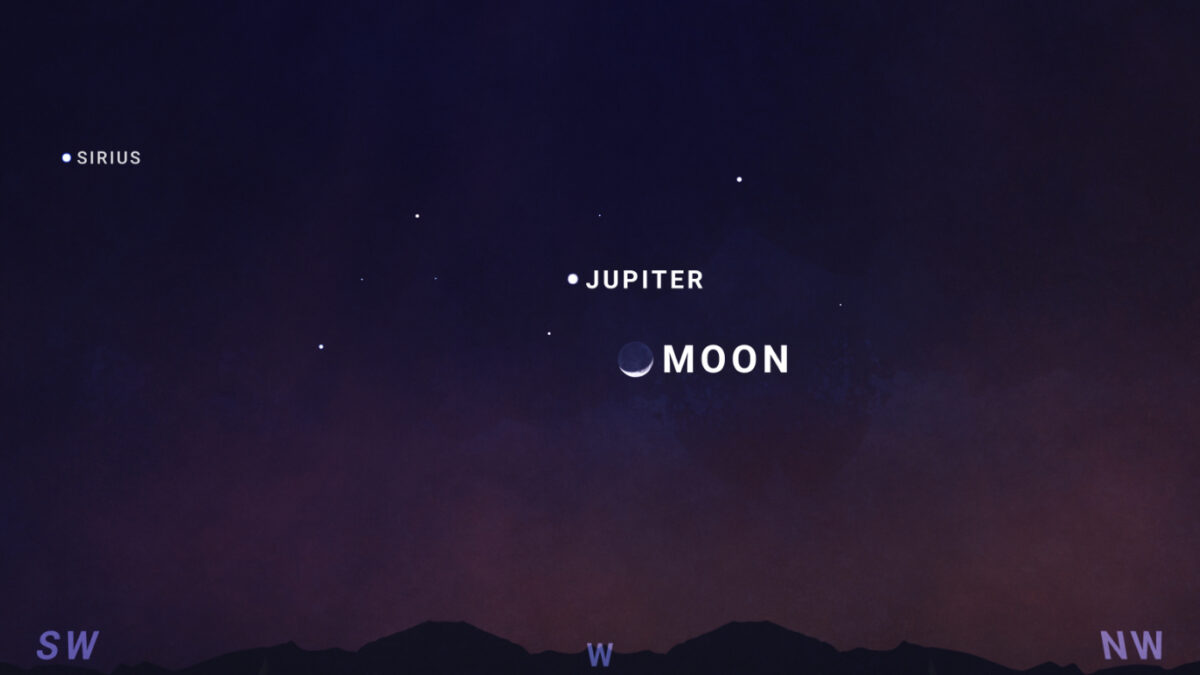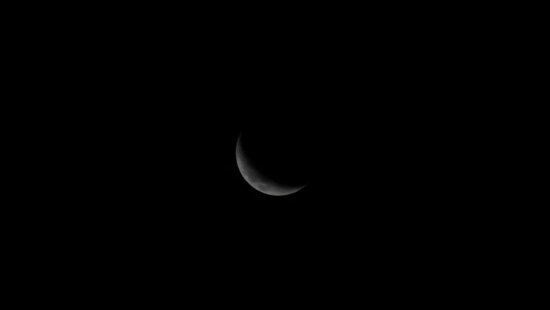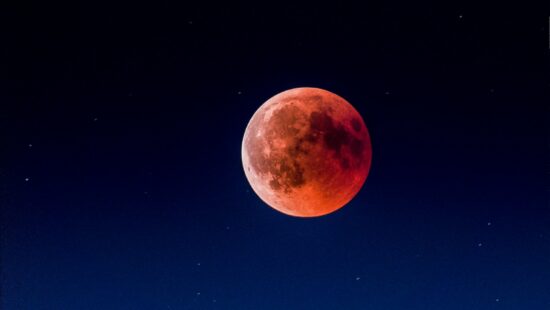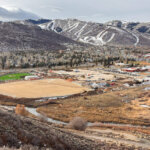Arts & Entertainment
Park City stargazer alert: end-of-April highlights include celestial “smiley face” over the Wasatch

Jupiter pairs with a slender crescent moon in the western sky about 30 minutes after sunset, while brilliant Sirius gleams low to the southwest. Photo: NASA
PARK CITY, Utah — Northern Utah skywatchers can look forward to a compact dawn triangle of planets, darker moon-free nights and a photogenic Jupiter-moon pairing before April ends, according to NASA’s latest “What’s Up” guide.
April 24–25: predawn “smiley face” over the Wasatch
Venus now dazzles as the morning star, and around 5:45 a.m. MDT on Thursday and Friday, it joins Saturn and a razor-thin crescent moon low in the eastern sky. Sunrise in Park City comes at 6:33 a.m. on April 24 and 6:32 a.m. on April 25, giving observers about 45 minutes to catch the trio, according to NASA’s Jet Propulsion Laboratory and time-and-date calculations.
The agency notes that those with an unobstructed horizon might also spot Mercury hugging the skyline beneath Venus.
Mars holds court after dusk
The red planet remains bright high in the south after sunset, setting a little after midnight each night. According to NASA, it drifts roughly 12 degrees eastward—about a fist’s width at arm’s length—by month’s end.
Lyrid meteors linger through April 25
Although the Lyrids peaked earlier this week, a few meteors may still streak overhead during the dark, moonless hours before dawn. NASA scientists track the dusty debris stream to study comet material and safeguard spacecraft.
April 27: new moon means darker skies
As the moon turns new just after midnight Sunday, leaving several evenings free of glare, NASA recommends hunting Messier 3, a 34,000-light-year-distant globular cluster often called a “city of stars.” To locate it, NASA advises “arcing to Arcturus” from the Big Dipper’s handle and sweeping toward the star Cor Caroli; M 3 lies about one-third of the way between the two.
April 30: Jupiter meets a young crescent
The month closes with Jupiter and a two-day-old crescent moon shining side by side in the west about 8:45 p.m., half an hour after sunset. The pair will slip below the Park City horizon just before midnight, according to NASA.
Up-to-date skywatching tips and mission news are available at NASA Science.




















